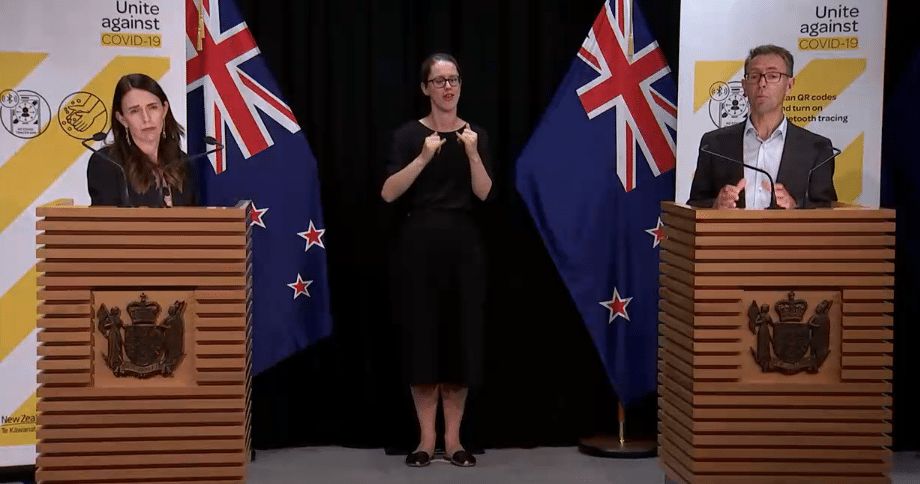More testing stations have been set up, especially in Auckland and New Plymouth. Anyone with symptoms is asked to get tested.
Ardern says Cabinet has decided to respond with a “cautious approach”, assuming the new cases could be one of the new, more transmissible strains. There is a need to go hard and early, she said.
Cabinet has decided: As of 11:59pm tonight Auckland will move to alert level 3 for three days
The rest of New Zealand will move to level 2
This will be reviewed every 24 hours.
“Three days should give us enough time to gather further information, undertake large scale testing and establish if there has been wider community transmission,” Ardern said.
People in Auckland need to stay home, work from home unless it’s not possible, if they go outside maintain 2m distance from others. Children are asked to stay home from school.
At alert level 3, schools and early childhood centres are open for children of essential workers.
At level 3, public venues are closed. Gatherings outside of your bubble are prohibited, with exceptions for funerals and weddings which are limited to 10 people, but Ardern encourages people to postpone these events if possible.
A border will be put in place in Auckland. Those who need to travel through the border can apply for an exemption.
A reminder of what alert level 2 involves:
- Schools and businesses remain open, but people are encouraged to take up alternative ways of working if possible, Ardern said.
- People are encouraged to practice good hygiene, keep track of where they have been and stay home if they are unwell.
- People are asked to stay 2 metres from others in public and in retail stores and 1 metre in most other places like workplaces, cafes, restaurants and gyms.
- Masks are mandatory on public transport and encouraged where physical distancing isn’t possible. Gatherings, including weddings and funerals, are limited to 100 people.
- “If you are well and if you have not visited any of our sites of interest, please there is no need for you to go to a testing station, and I ask that with sincerity,” Ardern said.
- People who are well and were not at a site of interest could clog up the testing system, she said.
- Human to human transmission is the most likely way someone catches Covid, but that might not be the case here, Ardern said. The mother who tested positive is less likely to have human contact with people who have Covid, but dealt with the laundry of people who might have Covid.
“Our view is you’ll have less regret if you move early and hard than if you leave it and it gets out of control,” Ardern said.
“I think it is an example of how tricky Covid-19 has always been.”
You can’t predict who might infect someone else, Bloomfield said. These new cases didn’t seem to happen in the first 10 months of the pandemic, nor was the case in Australia, Bloomfield said.
There is a lot of variation between how one person with Covid can infect others, compared to another person with Covid, Bloomfield said.“So whilst we talk about an R value of two or three…most people infect no one else, but there are some people who infect a lot of people and that pulls the average R value up.”The precautionary approach has served New Zealand well to date, Ardern says. Cabinet weighed up many factors and decided moving the country up alert levels was the necessary response, she says.Ardern said she’s advised her Auckland-based members to stay where they are.There is no reason for the lockdown to slow down the vaccine programme, Ardern said in response to a question.As Ardern said earlier, the situation will be reviewed every 24 hours.
The next update will be at post-Cabinet tomorrow at 4pm.Source: rnz.co.nz Republished by arrangement.

